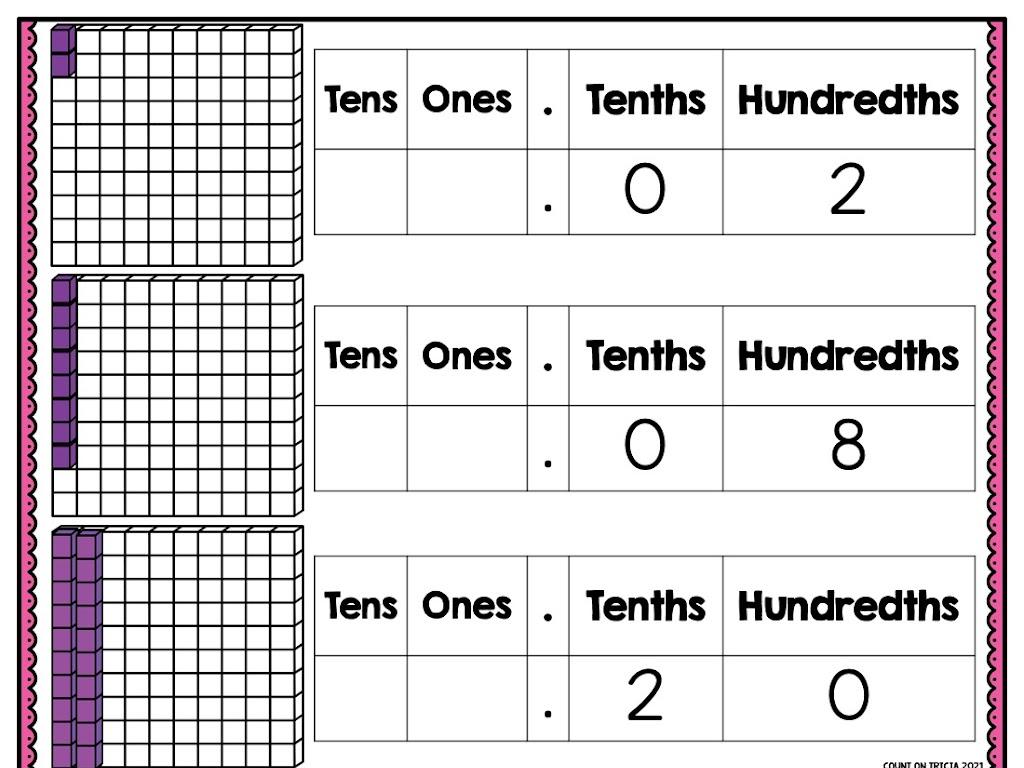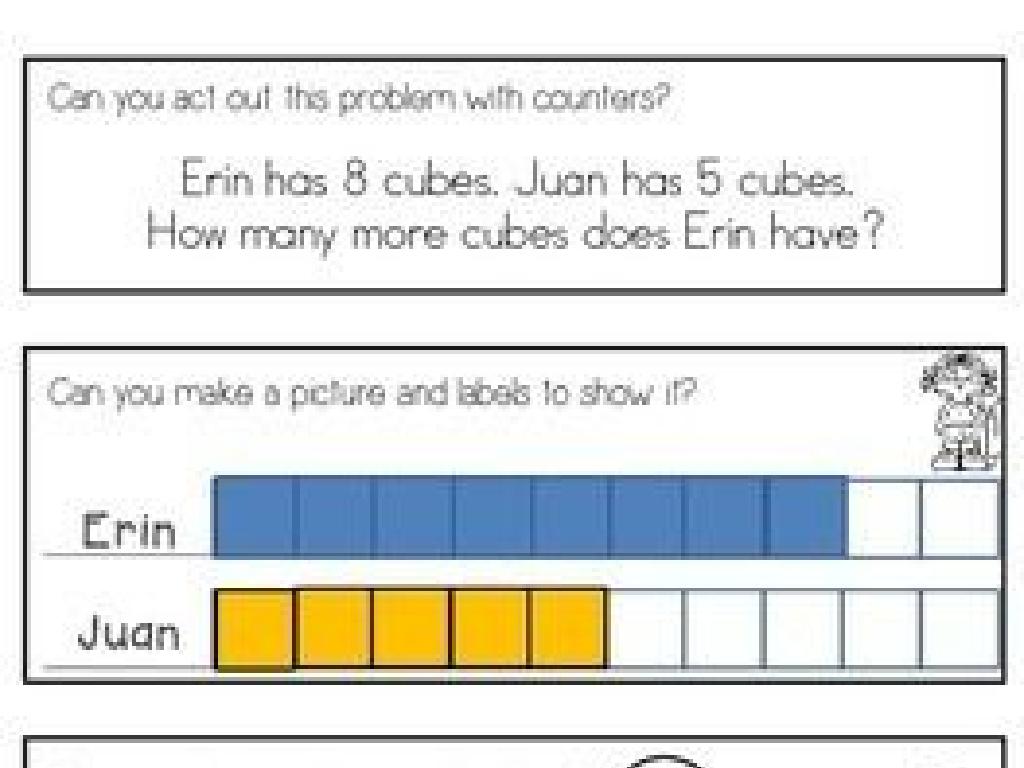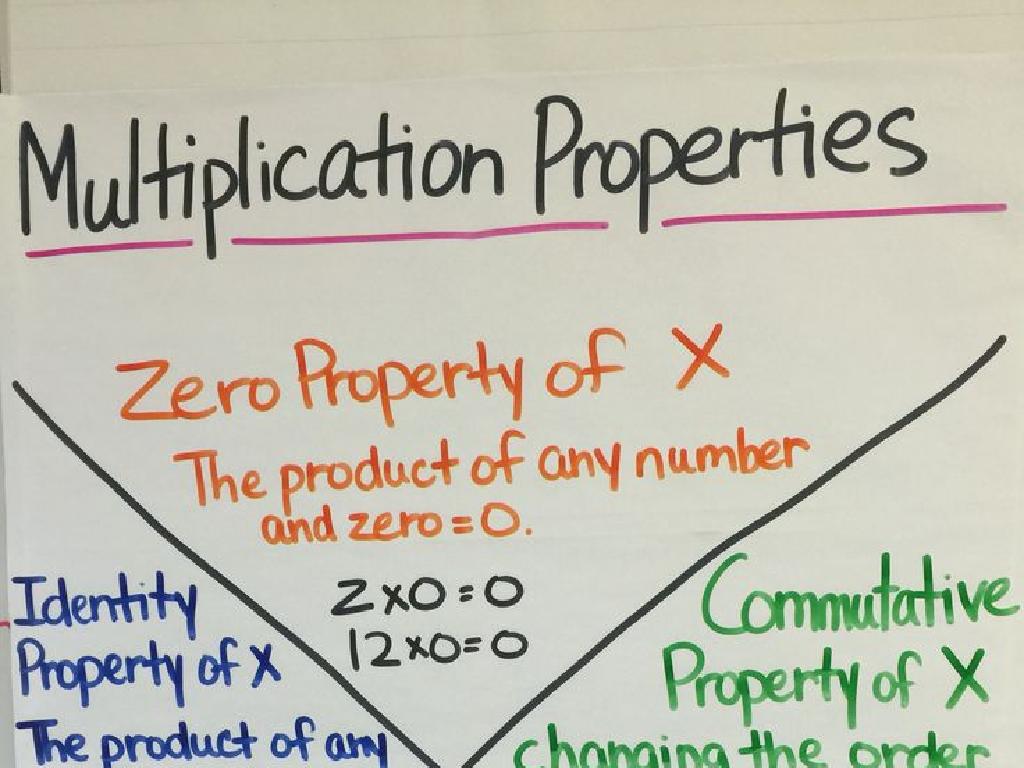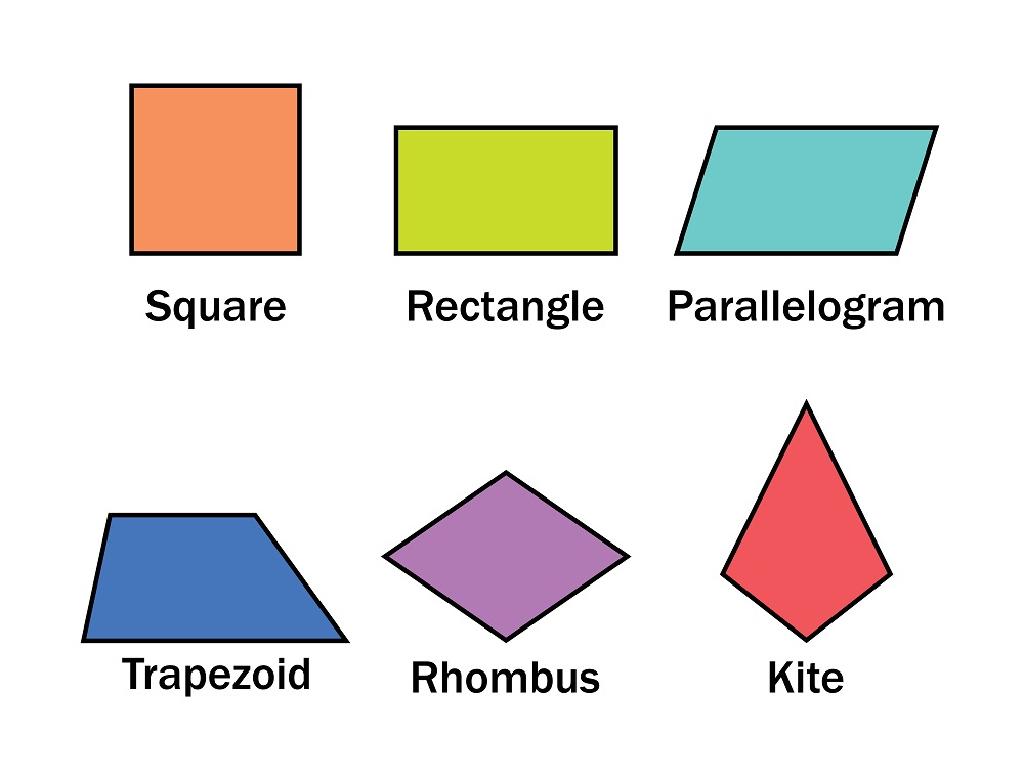Evaluate Powers
Subject: Math
Grade: Sixth grade
Topic: Exponents
Please LOG IN to download the presentation. Access is available to registered users only.
View More Content
Welcome to Exponents!
– Understanding the power of powers
– What are exponents?
– Exponents show how many times to use a number in a multiplication.
– Why are exponents important?
– They simplify writing and calculating large numbers.
– Practical applications of exponents
– Used in area calculations, scientific notation, and more.
|
This slide introduces the concept of exponents, which are a shorthand way to express repeated multiplication. It’s crucial for students to grasp that an exponent indicates how many times a base number is multiplied by itself. Emphasize the importance of exponents in making calculations with large numbers more manageable and in various practical applications such as computing the area of squares, understanding scientific notation, and in real-world scenarios like calculating interest rates. Provide examples to illustrate how exponents are used in everyday math and science.
Understanding Base and Exponent
– Define the base number
The base number is the value being multiplied.
– Explain the exponent
The exponent tells how many times to use the base in multiplication.
– Reading exponents aloud
Say the base followed by ‘to the power of’ the exponent.
– Practice with examples
For instance, 3^2 is read as ‘three to the power of two’.
|
This slide introduces the fundamental concepts of exponents, focusing on the base and the exponent. The base number is the number that is being multiplied by itself, and the exponent indicates how many times the base is used as a factor in the multiplication. It’s crucial to teach students how to properly read exponents aloud, as this will aid in their understanding and communication of mathematical concepts. Provide examples such as 2^3 (two to the power of three) and 5^2 (five to the power of two) to illustrate the point. Encourage students to practice with additional examples to reinforce their learning.
Understanding Simple Exponents
– Calculate powers of 2 and 3
– Powers like 2^3 (2 cubed) or 3^2 (3 squared)
– Use exponents in multiplication
– Multiply numbers with exponents, e.g., 2^2 * 2^3
– Solve exponent practice problems
– Practice with problems like 4^2 or (2^3) * (3^1)
|
This slide introduces students to the concept of simple exponents, focusing on the powers of 2 and 3. Begin by explaining what an exponent is and how it represents repeated multiplication. Show how to calculate powers of 2 and 3 with examples like 2^2 (2 squared) and 3^3 (3 cubed). Then, demonstrate how to use exponents in multiplication, such as multiplying 2^2 by 2^3. Provide practice problems for students to apply what they’ve learned, reinforcing their understanding of exponents. Encourage students to work through the problems and explain their reasoning, fostering a deeper comprehension of the material.
Rules of Exponents
– Multiplying with same base
– Multiply the exponents: 3^2 * 3^3 = 3^(2+3)
– Dividing with same base
– Divide the exponents: 3^5 / 3^2 = 3^(5-2)
– Power of a power
– Multiply the exponents: (3^2)^3 = 3^(2*3)
– Simplifying expressions
|
This slide introduces the fundamental rules of exponents, which are crucial for simplifying expressions in algebra. When multiplying powers with the same base, add the exponents. For dividing powers with the same base, subtract the exponents. The power of a power rule requires you to multiply the exponents. These rules are the building blocks for understanding more complex algebraic expressions. Encourage students to practice these rules with different bases and exponents to become comfortable with the concepts. Provide examples and have students solve similar problems to reinforce learning.
Evaluating Negative Exponents
– Understanding negative exponents
– A negative exponent means reciprocal of the base raised to the opposite positive exponent.
– Negative exponents to fractions
– Convert a negative exponent by flipping the base to the denominator and making the exponent positive.
– Practice with negative exponents
– Solve practice problems to grasp the concept.
– Mastery through examples
– Use examples like 2^-3 = 1/(2^3) = 1/8 to demonstrate.
|
This slide introduces the concept of negative exponents and how to evaluate them. Start by explaining that a negative exponent represents the reciprocal of the base raised to the corresponding positive exponent. Demonstrate the conversion of negative exponents to fractions, ensuring students understand that the base moves to the denominator and the exponent becomes positive. Provide practice problems to solidify their understanding, and use clear examples to illustrate the process. Encourage students to work through the examples and practice problems to gain confidence in evaluating negative exponents.
Zero as an Exponent
– Any number to the power of zero is one
– Examples of zero exponents
– 5^0 = 1, 100^0 = 1, (2/3)^0 = 1
– Discuss zero exponents in class
– Share thoughts: Why is anything to the power of zero one?
– Why does zero exponent equal one?
– Explore the pattern: 2^3, 2^2, 2^1, and 2^0
|
This slide introduces the concept of zero exponents to sixth-grade students. Begin by explaining that any number raised to the power of zero equals one, which may seem counterintuitive at first. Provide clear examples using both whole numbers and fractions to illustrate this rule. Facilitate a class discussion to allow students to voice their initial thoughts and questions about this concept. Guide them to understand the pattern by progressively decreasing the exponent and observing the results, leading to the conclusion that any base with an exponent of zero is one. Encourage students to think critically about the mathematical reasoning behind this rule.
Class Activity: Exponent Bingo
– Receive your unique Bingo card
– Solve exponent problems together
– We’ll solve powers as a class on the board
– Mark correct answers on your card
– If your card has the answer, put a marker on it
– Aim for five in a row to win!
|
This interactive class activity is designed to help students practice evaluating powers in a fun and engaging way. Each student will receive a Bingo card filled with different bases and exponents. As the teacher solves exponent problems on the board, students will mark off the corresponding answers on their cards. This game encourages active participation and attentiveness. The first student to get five correct answers in a row, horizontally, vertically, or diagonally, wins a prize. Make sure to prepare different Bingo cards with a variety of exponent problems and have small prizes ready for the winners. This activity not only reinforces the concept of exponents but also provides a way to assess students’ understanding in real-time.
Homework and Practice: Mastering Exponents
– Complete the Exponent Worksheet
– Study for the Exponents Quiz
– Review notes and try sample questions
– Review today’s exponent lesson
– Go over the lesson and examples we did in class
– Practice problems at home
– Solve additional problems to strengthen your skills
|
This slide outlines the homework and preparation required for students to solidify their understanding of exponents. The Exponent Practice Worksheet is designed to reinforce today’s lesson and provide additional practice. Encourage students to study for the upcoming quiz by reviewing their notes and attempting sample questions. They should also revisit today’s lesson, paying special attention to the examples and practice problems discussed in class. To further enhance their skills, students should solve extra problems at home, ensuring they are comfortable with the concept of exponents before the next class.






